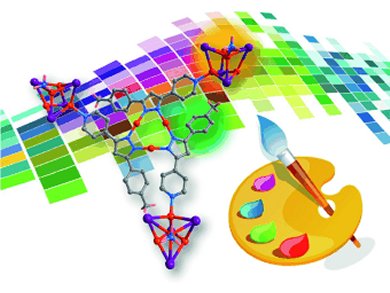The field of luminescent metal-organic framework (MOF) materials provides a new platform for the design and construction of supramolecular systems that are capable of performing light-induced functions, such as chemical sensors, light-emitting devices, and optical biomedicines. Manipulation of the luminescent and thermochromic behaviors of MOFs by tuning the luminophores, which contribute cooperatively to the visual color of the MOF material, is a strategy known as the “chemopalette” effect.
Dan Li and co-workers, Shantou University, China, have discovered an intriguing chemopalette effect in their study of the MOF materials [Cu4I4(NH3)Cu3(3-(4-pyridyl)-5-(p-tolyl)pyrazolate)3]n, [Cu4I4(NH2CH3)Cu3(3-(4-pyridyl)-5-(p-tolyl)pyrazolate)3]n, and [Cu4I4Cu3(3-(4-pyridyl)-5-(2,4-dimethylphenyl)pyrazolate)3]n.
These materials exhibited diverse thermochromism upon regulation of the different supramolecular microenvironments between the 2D layers of the MOFs and by fine-tuning the Cu–Cu distances in the excimeric [Cu3(pyrazolate)3]2 luminophore. A possible application of this finding might be in thermometer-like phosphorescence-emitting devices.
- Luminescent Metal-Organic Frameworks (MOFs) as a Chemopalette: Tuning the Thermochromic Behavior of Dual-Emissive Phosphorescence by Adjusting the Supramolecular Microenvironments,
Shun-Ze Zhan, Mian Li, Seik Weng Ng, Dan Li,
Chem. Eur. J. 2013, 19.
DOI: 10.1002/chem.201204632




